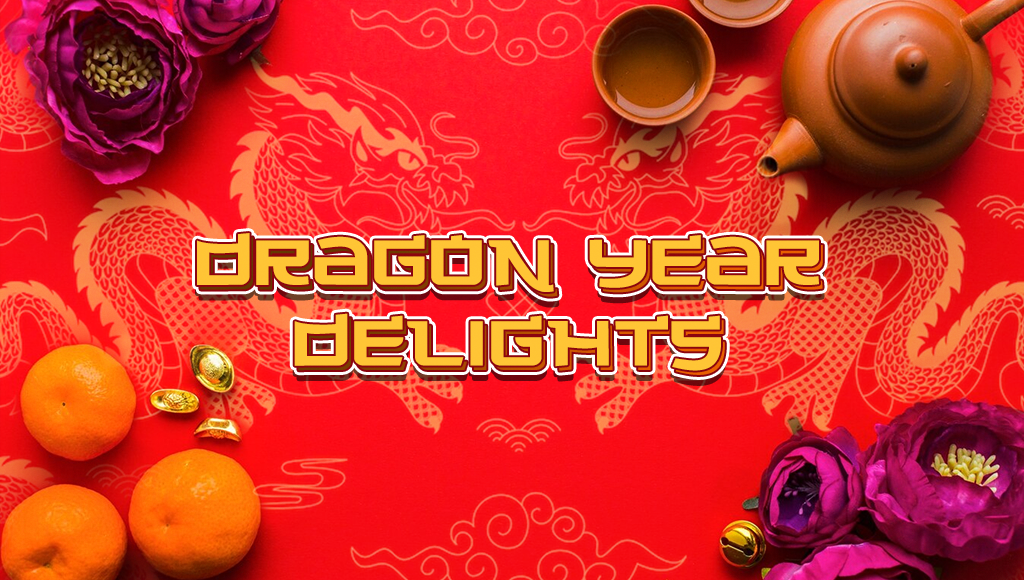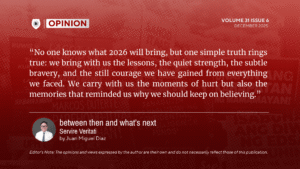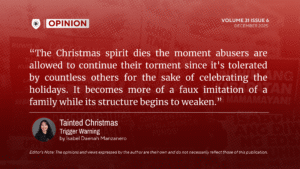By Ian Jonas Ruga | February 10, 2024
Dragon Year Delights: Filipino-Chinese Traditions
THE Year of the Dragon has dawned upon us again, marking a time of vibrant festivities and cherished traditions for Filipinos across the country. As we celebrate Chinese New Year, we induce our unique customs and rituals, creating a colorful amalgamation of cultural heritage. Let’s explore the combined traditions that come alive during this festive occasion.
Fiery Adornments
In the Philippines, Chinese New Year is celebrated enthusiastically, filling the air with excitement and joy. Streets are decorated with lanterns, red banners, and vibrant decorations, each featuring traditional symbols such as the Chinese character for luck (福) and the lucky color red. The atmosphere is lively, bustling with firecrackers exploding in a symphony of pops and crackles while dragon dancers weave through the streets. Cheerful greetings are exchanged among friends and family, along with the sharing of traditional delicacies like dumplings and Tikoy, adding to the festive spirit of the occasion.
Prosperous Plates
Central to the Filipino celebration of Chinese New Year is the tradition of feasting and family gatherings. Loved ones come together to share delectable meals, showcasing an array of traditional dishes believed to bring luck and prosperity in the coming year. From steamed fish symbolizing abundance to Tikoy, a glutinous rice cake representing unity and togetherness, each dish holds special significance in Filipino-Chinese culture. These culinary delights, along with long noodles, dumplings, and spring rolls, form the heart of the Lunar New Year festivities, embodying wishes for success, longevity, and prosperity.
Lucky Red Envelopes
Another cherished tradition involves the distribution of red envelopes, known locally as “Ang Pao.” These envelopes, filled with money, are traditionally given by older family members to children and unmarried adults without jobs. Rooted in the belief that red envelopes bring good luck and ensure recipients’ well-being and safety throughout the year, this practice symbolizes a transfer of fortune from employed adults to younger or non-working family members. It reinforces bonds and brings prosperity and longevity to both the giver and the receiver.
Dragon Dances & Fireworks
One of the most anticipated highlights of the celebration is the mesmerizing dragon and lion dances. Performers dressed in elaborate dragon and lion costumes parade through the streets, accompanied by rhythmic drumming and cymbal clashing. These dynamic performances are believed to ward off evil spirits and usher in good fortune for the year ahead, captivating spectators of all ages. Adding to the spectacle, the night sky is illuminated with dazzling fireworks displays, filling the air with bursts of color and light, symbolizing the joyous celebration and the promise of a prosperous new year.
Unity in Celebration
As we welcome the Year of the Dragon, we embrace reflection and renewal, setting intentions for new beginnings with optimism. Amidst festivities, there's a collective anticipation for what lies ahead. The celebration of Chinese New Year reflects the rich blend of cultural diversity and unity. Through combining Filipino and Chinese traditions, communities honor the past, celebrate the present, and eagerly embrace the future. Let's cherish these traditions and continue fostering bonds of friendship and kinship as we move forward.
Volume 29 | Issue 3




